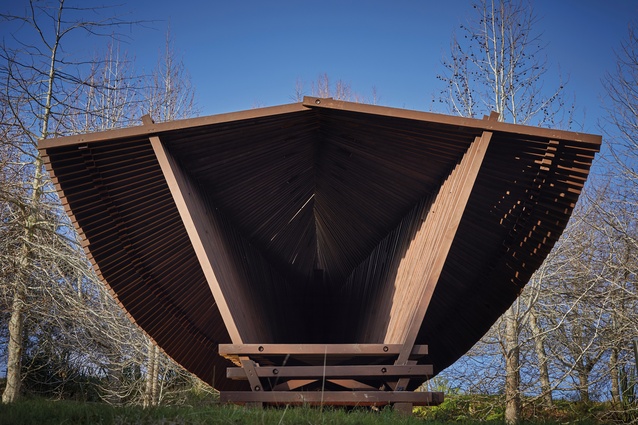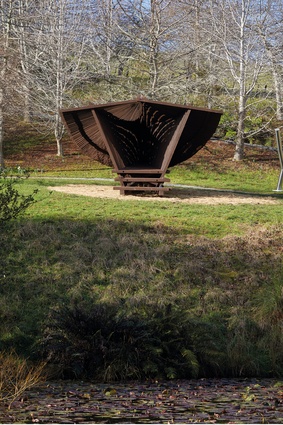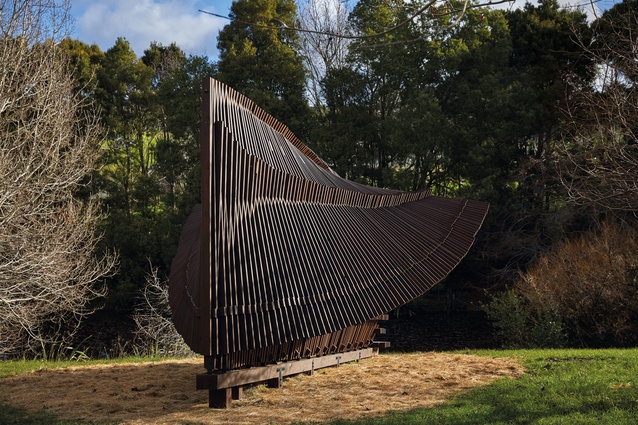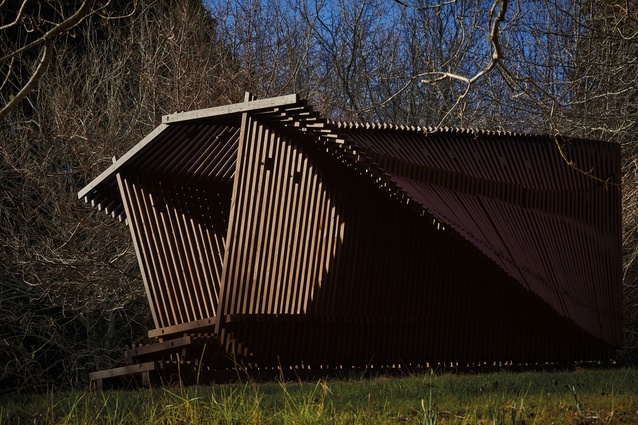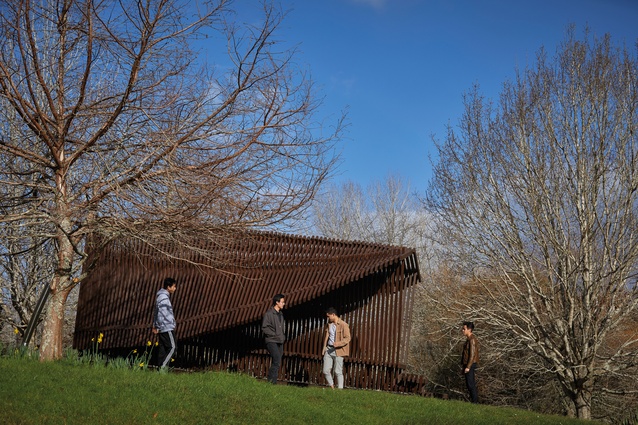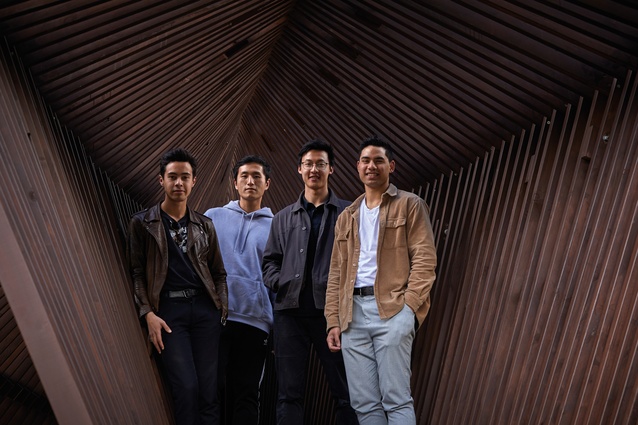Brick Bay Folly 2019: The Wood Pavilion
What if the rigid, fit-for-purpose timber within the structure of the domestic house were able to express itself freely in a different setting, such as a sculpture park? This was the question posed by the winners of the 2019 Brick Bay Folly competition.
In creating The Wood Pavilion, four first-year MArch students at the University of Auckland’s School of Architecture and Planning – Leo Zhu, Dorien Viliamu, Daniel Fennell and Wenhan Ji – took 419 pieces of 90x45mm timber on a journey, one which the team describes as an exploration into the materiality of timber.
“While the sustainability and lightness of the timber were key,” explains Zhu, “it was the element of componentry – the notion that many members come together to support each other in a collective whole – that was integral to the project.”
Together, the team created multiple digital models to explore the movement of the timber before realising the final design, an elegant intersection between sculpture and architecture. However, the design evolution was not without its challenges.
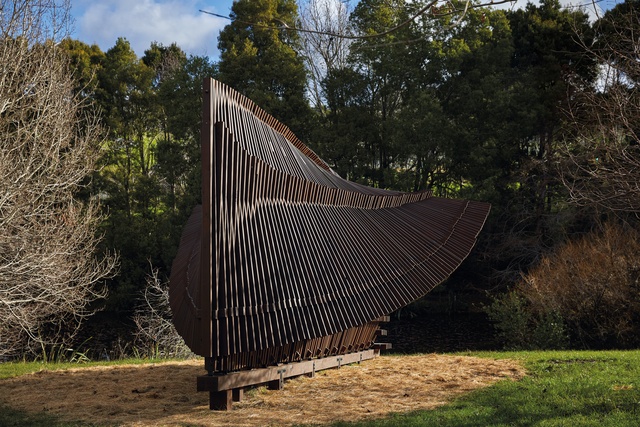
“We had a few technical problems with both the big picture and the details in confirming the structural integrity of the project,” says Viliamu. “The original idea was to build the pavilion with screws and nails, but then Dave Hunter from Leighs Construction and Philip Haycock from Naylor Love brought a few engineers on board and they came up with different variations of joinery, like threaded rods.”
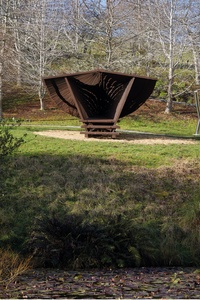
After refining and finalising the digital model, the students set about creating a series of physical models, from small conceptual models to a larger 800x400mm version and then, finally, a 1:2 prototype, made with the help of Unitec lecturer Yusef Patel.
“We then had to think about the process of how to connect it all together on site,” says Viliamu, “in sections or piece by piece.” The decision was made to divide the pavilion into 16 sections, each assembled off site, before being transported to Brick Bay, where the sections would be connected together on top of timber piles and concrete footings.
The four-week construction process took place at various locations around the city – cutting in back yards, staining at the Trusts Arena and assembling at a factory provided by University of Auckland architectural graduate Andrew Porteous – leading up to the installation on site in late July.
“There were quite a few challenges we didn’t foresee,” says Zhu. “Designing versus constructing is quite different and this was the team’s first experience at attempting to construct a project of this size. Pretty much every day, we were presented with a new problem to solve so our plans would change daily. We couldn’t have done it without our mentors – Richard Harris and design tutors Uwe Rieger and John Chapman from the University of Auckland.”
The Wood Pavilion was officially unveiled on Saturday 7 September, the fifth folly to be installed at the Brick Bay Sculpture Trail, which is home to more than 40 contemporary sculptures by New Zealand-based artists.
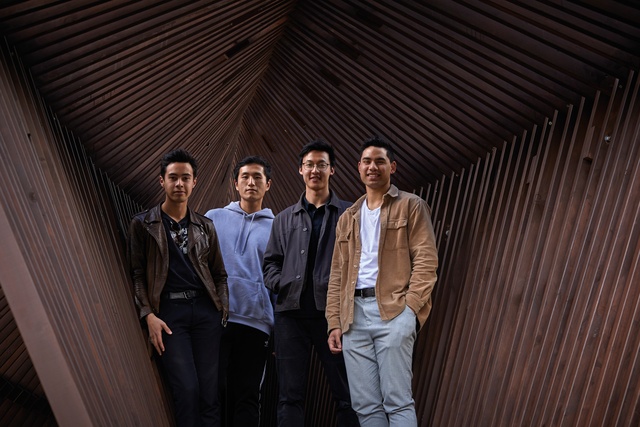
The team received a grant of $30,000 towards realising the project, which included $15,000 from Resene, $10,000 in building supplies from Naylor Love and $5000 from the Brick Bay Sculpture Trust.
This year’s selection panel comprised architect Richard Harris, Ryan McKenzie from Resene, Richard Didsbury, Anna Didsbury and Sheridan Dickson from Brick Bay, Yusef Patel from Unitec, 2018 winner Cynthia Yuan from Xigo and Chris Barton from Architecture New Zealand.
Special thanks are extended to the 2019 sponsors – Resene, Brick Bay, Unitec, University of Auckland, New Zealand Institute of Architects, Architecture New Zealand and ArchitectureNow – to Samuel Hartnett for providing imagery of the Folly and to Brick Bay Art Manager Claire Ulenberg.
This article first appeared in Architecture New Zealand magazine.
 Subscribe here
Subscribe here

